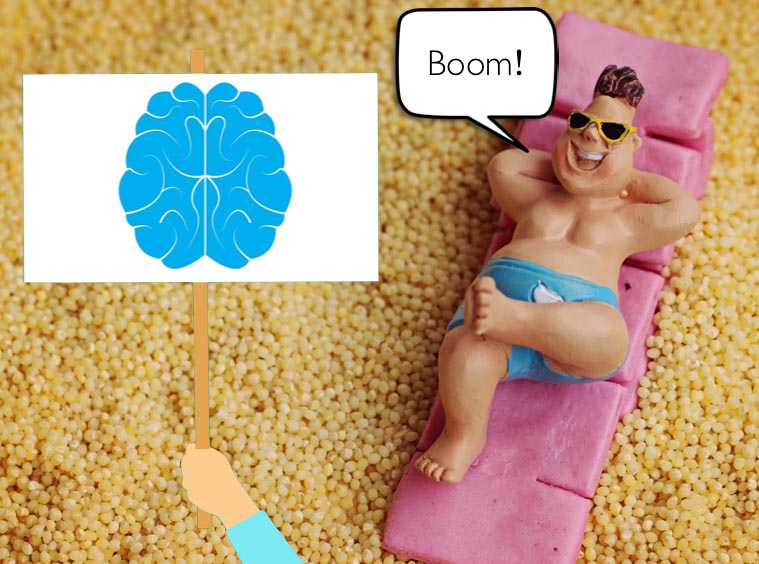
Then consider chewing on gum for 5 minutes before the test.
This is what researchers recommend in a journal article called Cognitive advantages of chewing gum. Now you see them, now you don’t. In this study, researchers from St Lawrence University conducted a series of gum chewing experiments. Students were split into different groups and were instructed to:
1) Chew gum for 5 minutes before taking a test;
2) Chew gum before and during taking a test; and
3) Not chew gum before or during the test (control group).
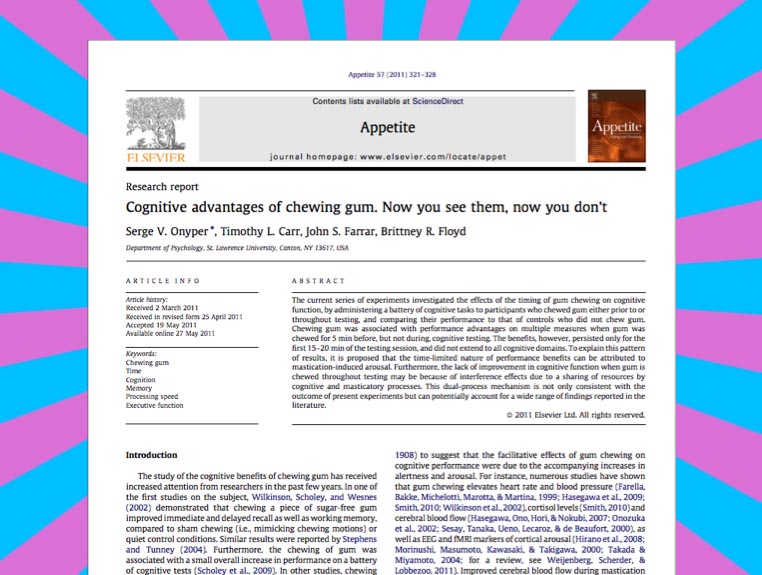
The researchers found that chewing gum for 5 minutes before the test gave students a boost in brainpower … but the benefits only lasted for 15-20 minutes.
Unfortunately, it didn’t.
In fact, other studies have found chewing gum during a test can negatively impact on your performance. Instead of dedicating 100% of your brainpower to answering the test question, some of your brainpower is directed towards the act of chewing the gum. In short, chewing gum is distracting.
So if you’re going to chew gum, do it right. Do it for 5 minutes before the test and then spit it out.

Three main theories have been proposed for the cognitive enhancing benefits of gum chewing:
1. Chewing gum results in the enhanced delivery of glucose to the brain.
2. Chewing gum makes you feel more alert.
3. Chewing improves blood flow in the brain.
Here’s what the researchers concluded in their discussion:
…there is evidence that some flavors lead to an amplification of cognitive effects, even in the absence of chewing …On the other hand, studies also reveal performance improvements after participants chew flavorless gumbase, suggesting that the presence of gum itself is sufficient to induce changes in cognitive functioning.
In case your wondering, the students in the St Lawrence gum chewing experiment chewed on Wrigley’s spearmint flavoured sugar-free gum and doublemint chewing gum.
My advice would be to choose a chewing gum flavour that you like. After all, if you don’t like it and it leaves a terrible taste in your mouth, this is likely to distract you in the test.
Most chewing gums contain a synthetic plastic (read more about it here). That’s like chewing on a gumboot or car tyre to get a short cognitive boost. It just isn’t worth it.

To be on the safe side, it’s best to purchase a natural plastic-free gum like Glee Gum.
Sugar content is also important to consider. Chewing on gums that contains sugar is like eating lollies. And the last thing you want to experience is a sugar crash during a test. Purchase sugar-free gums that are aspartame free.
Rate of chewing doesn’t seem to really matter. It’s the act of chewing that is most important. So set your own pace.
At the end of the day, it’s important to remember that chewing gum before a test will only deliver a short-lived boost in cognition. Chewing gum can never replace using effective study strategies or a good night’s sleep but it’s an extra evidence based tool we can add to our toolbox of strategies. Thank you, Science!
Share This:
As someone who loves to read, I always look for great books to add to my shelves and the growing pile of books next to my bed. Over the past year, I’ve stumbled upon some amazing books that I’m excited to share with you.
Whether you’re looking to enhance your thinking, organise your life, create new habits, or get absorbed in an inspiring story, this list has something for everyone.
Here are nine standout books from my 2024 reading list that are well worth your time.
Let me know which ones you’re excited to pick up—and don’t forget to share your recommendations with me. Let’s go!
“We use our brains entirely too much – to the detriment of our ability to think intelligently. What we need to do is think outside the brain.”
There’s an old assumption that thinking happens inside the brain. But this book blows that assumption apart. Annie Murphy Paul presents compelling research that shows there are many ways we can use the world around us to improve our ability to think, learn, and unleash creative ideas.
This book changed my behaviour in several ways:
I’ve been able to “extend my intelligence” using my body, physical space, and relationships. If you’re curious about the science behind these behaviours, I recommend reading this book.
“Avoid all exercise”, “Maximise screen time”, and “Can’t afford it? Get it anyway”.
These are just three of the 40 behaviours and habits psychologist Dr Randy Paterson encourages us to engage in to guarantee a lifetime of misery.
This book takes advice we all need to hear, flips it, and presents it in a way that cuts through.
I was surprised by how motivating this book was. It made me want to move my body, stay off screens, and engage in self-care acts way more than your usual self-help book. It also helped that it was laugh-out-loud funny.
How to be Miserable was such a delight to read that I purchased Paterson’s other book for young adults (How to be Miserable in Your Twenties). Both books I highly recommend.
“A restaurant is a promise: walk in and we’ll be ready. Select anything on our menu and we’ll cook it for you quickly and well.”
Chefs can’t wing it. They need to be organised and have a plan. We can learn a lot about how to organise ourselves and manage our commitments from the culinary world.
This book outlines the philosophy and strategies of running a successful commercial kitchen and shows how to apply these ideas to navigate our lives with power and ease.
Dan Charnas discusses ideas such as slowing down to speed up, knolling, rearranging spaces to remove resistance and making first moves. As someone who loves cooking and being organised, I thoroughly enjoyed this book.
“As Australia is the third-largest exporter of fossil fuels in the world, what we do over the next handful of years really, really matters. The time for standing on the sidelines has passed.”
Joelle Gergis is a climate scientist who gave up a prestigious academic position to sound the alarm on the climate emergency. In this Quarterly Essay, she lays out the latest climate science in a clear and compelling way and shows readers what is at stake if we continue business as usual (e.g., approving new fossil fuel projects).
This essay is a heavy but essential read for all Australians who want a liveable future.
This book is a collection of nuggets of wisdom that Kevin Kelly wrote for his adult children. This is life advice he wishes he had known earlier.
At first glance, this looks like just another standard book of uplifting quotes. But don’t be mistaken. This is no ordinary book of quotes.
Kelly could have easily written entire waffly chapters on each quote, but I’m so glad he restrained himself. Each quote is small but mighty, providing plenty of food for thought and practical advice.
Here is a small selection of Kelly’s life advice that resonated with me:
“Be frugal in all things except in your passions. Select a few interests that you gleefully splurge on. In fact, be all-round thrifty so that you can splurge on your passions.”
“The best work ethic requires a good rest ethic.”
“We tend to overestimate what we can do in a day and underestimate what we can achieve in a decade. Miraculous things can be accomplished if you give it 10 years.”
The Australian government recently passed legislation to ban social media use by teenagers. Some have cited this book as the reason for the ban. If that’s true, I can certainly see why.
Social psychologist Dr Jonathan Haidt argues that we are overprotecting our children in the real world while underprotecting them online. This has led to disastrous consequences for young people’s mental health and development.
Before reading this book, I didn’t like social media companies and the manipulative strategies they use to hijack people’s time and attention. Over the years, I had read a lot of books outlining the harms of social media. What’s unique about this book is that Haidt presents a plan for cleaning up the mess these Big Tech companies have created and ensuring children develop in a healthy way.
Haidt’s plan involves keeping children off social media for as long as possible. Whether you’re a child or an adult, I firmly believe that everyone can benefit from some time away from these platforms. As Haidt succinctly puts it:
“The Anxious Generation is a book about how to reclaim human life for human beings in all generations.”
This book argues that we’ve been brainwashed to measure whether we are winning at life by the size of our possessions and the amount of money we have. However, according to author Robin Sharma, this definition of success is far too narrow and limiting.
Sharma expands the definition of wealth and what it means to “live abundantly and beautifully” by sharing other forms of wealth often overlooked by capitalist culture.
If we invested more time in personal growth, building connections and community, and cultivating good health, we would feel deeply alive rather than exhausted from the hedonic treadmill.
I’ll leave you with this quote that struck a chord with me (written in the chapter on Health):
“If you don’t feel good physically, mentally and spiritually, all the money, possessions and fame in the world mean nothing. Lose your wellness (which I pray you never will) and I promise you that you’ll spend the rest of your days trying to get it back.”
This delightful children’s book starts with Jim Panzee waking up feeling grumpy.
“The sun was too bright, the sky was too blue, and the bananas were too sweet”.
Have you ever woken up feeling a little bit off?
This book is a fun way for everyone (not just little kids) to understand human emotions. It’s okay to be grumpy! It’s okay to wake up feeling a bit off. Allow yourself to experience these emotions. In time, they shall pass.
One of my relatives is obsessed with The Wiggles (an Australian children’s performance group). After reading Anthony Field’s memoir (the Blue Wiggle), I finally understand all the fuss. The Wiggles are amazing!
Field’s memoir takes a deep dive into how the band started, how they managed to stay true to their values and mission, and the challenges they faced along the way.
Field is honest about his difficult time in school, media blunders, and his struggles with physical and mental health issues over the years. What can I say? Out of the Blue is a refreshing, wholesome read.
“I’ve been thrilled to become the major on-stage instrumentalist playing guitar, bass, drums, mandolin, bouzouki, and anything else a curious child might want to explore musically. It turns out that the maintenance of a child-like wonder about the world isn’t so hard to retain, even after you turn 60.”
There you have it! Nine books that shifted my perspective and changed my behaviour in some way. Now, it’s over to you – what books helped to shape your year? Are there any you’d recommend?
I’d love to hear your recommendations.
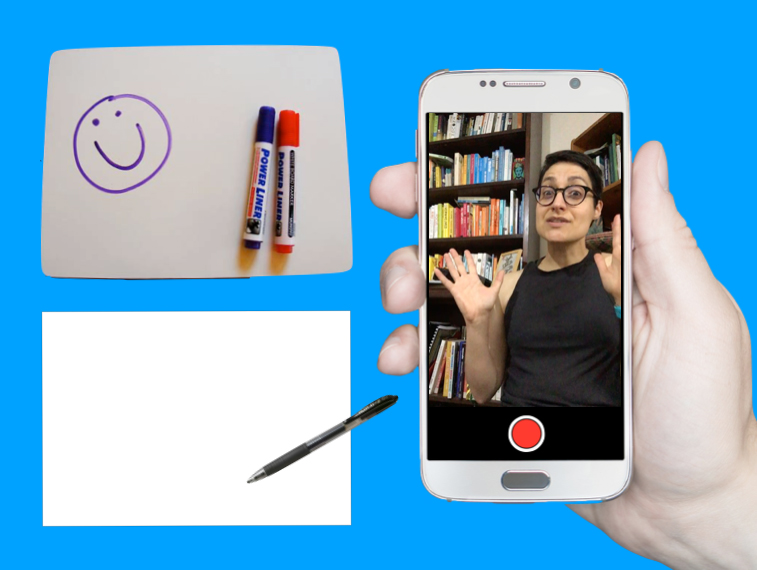
Research shows active recall (aka retrieval practice) is a highly effective strategy for remembering information. This strategy will take your studies and your grades to the next level.
Active recall involves bringing information to mind without looking at your books and notes.
I have spent the last 30 days experimenting with this excellent learning strategy. In this blog, I’ll share what I did and how I kept the process interesting for my brain.
I no longer need to study for tests and exams.
So, why did I spend 30 days using active recall strategies?
In my line of work, I need to constantly come up with new and original content to present to students. I also need to memorise this content. Why?
Because if I was to read from a sheet of notes or text heavy slides that would be really boring for students. I want to connect with students and to do this, I have to be able to deliver the content off the top of my head with speed and ease.
This is where active recall enters the picture.
Active recall helps to speed up the learning process. It allows you to learn more in less time.
Below I share some of the ways I use active recall to learn new presentation content. Keep in mind, you can use all of these strategies to prepare for an upcoming test or exam.
Whiteboards are wonderful learning tools. Here’s how I use a whiteboard to do active recall . . .
I push my speech notes to the side, so I can’t look at them. Then I grab a marker and say to myself, “What can you remember? Go!”.
I write out everything I can remember on the whiteboard. Once I’ve exhausted my memory, I pick up my notes and check to see how I went (using a red marker to make corrections).
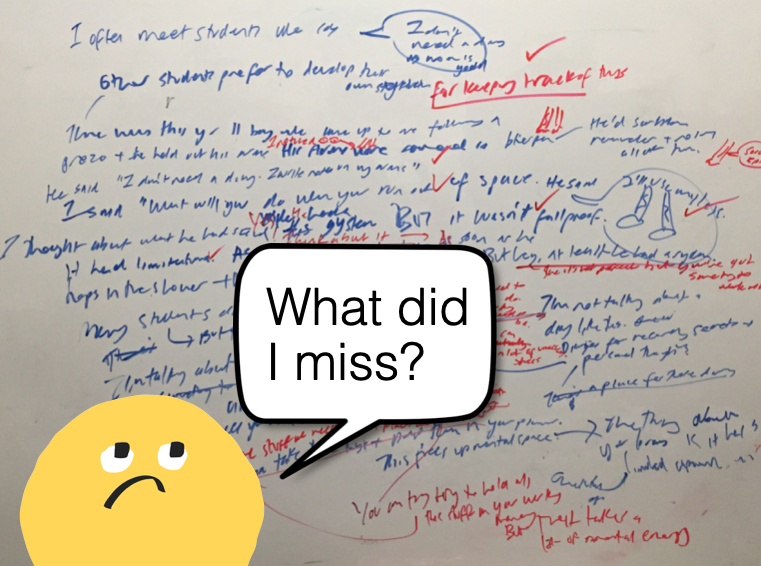
No whiteboard? No problem!
I pick up a pen and sheet of paper and start scribbling out whatever I can remember on the topic. When I get stuck, I pause and take a few deep breaths as I try to scan my brain for the information.
I regularly remind myself that it is okay to not remember the content. “This is how the process goes!”, I say to myself. There is no point beating myself up. That only leads to feelings of misery and not wanting to do active recall practice.
After having a shot at it, I take out my notes, pick up a red pen, and begin the process of checking to see how I went.
Sick of writing? I get it.
Try drawing out the information instead. Alternatively, you can use a combination of words and pictures, which is what I often do.
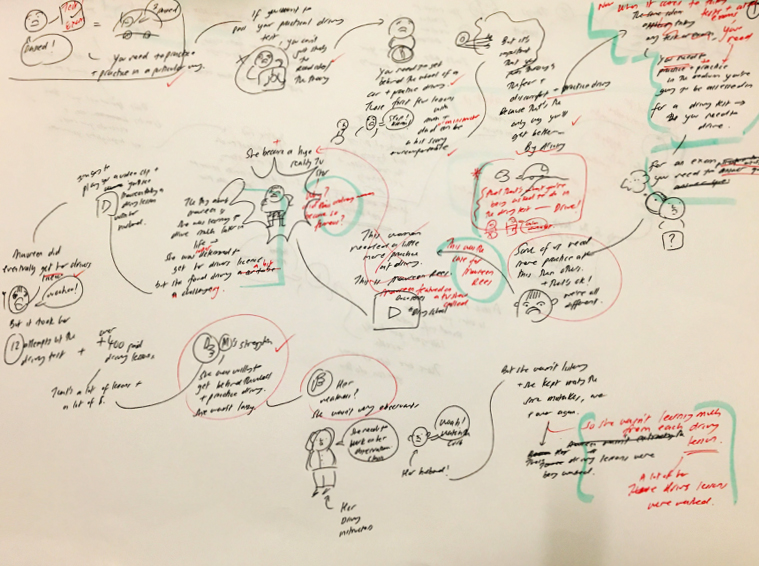
Grab a blank piece of paper (A3 size is best) and create a mind map of everything you can remember on a topic (no peeking at your notes). Then check your notes or the original mind map to see what you remembered correctly and incorrectly.
Writing and drawing out information can take time. If you want to speed up the process, you can talk to yourself.

But don’t do this in your head. It’s too easy to just say “Yeah, yeah, I know this stuff!”. You need to speak it out loud as this forces you to have a complete thought. Then, check your notes to see how you went.
The only downside with this approach is you don’t have a tangible record of what you recalled, which brings me to the next strategy . . .
I make videos of myself presenting the content (without referring to my notes). Although I use special software and tools to make my videos, you don’t need any fancy equipment. Your phone will do the job. Here’s what you can do . . .
Set your phone up so the camera is facing you. Now hit the record button and tell the camera what you’re going to do active recall on. Have a shot at explaining the idea. Then stop recording and hit the play button.

Watching yourself struggle to remember information is often hard viewing. But this is where it’s super important to double down on telling yourself kind thoughts (e.g., “I’m still learning this content. It’s going to be rusty and feel clunky – that’s okay!”).
You need to take a deep breath and keep watching because the video will give you valuable feedback.
For example, if you stop midsentence and you don’t know how to proceed, that tells you something: you don’t know this stuff so well! Make a note. This part of the content needs your attention.
Hand your notes over to a friend, parent, or sibling. Now get them to ask you questions on the content.
I sat with my mum and showed her a print out of my slides for a new presentation. The slides were just pictures (no text).
As I went through the slides, I explained the ideas to mum. I made notes of any sections I was rusty on. Mum also asked lots of questions, which allowed me to think more deeply about the content.
When it came crunch time (a few days before the final presentation), I printed out my presentation slides (16 per page) and used each slide as a prompt. I’d look at the slide and say, “What do I need to say here?”.
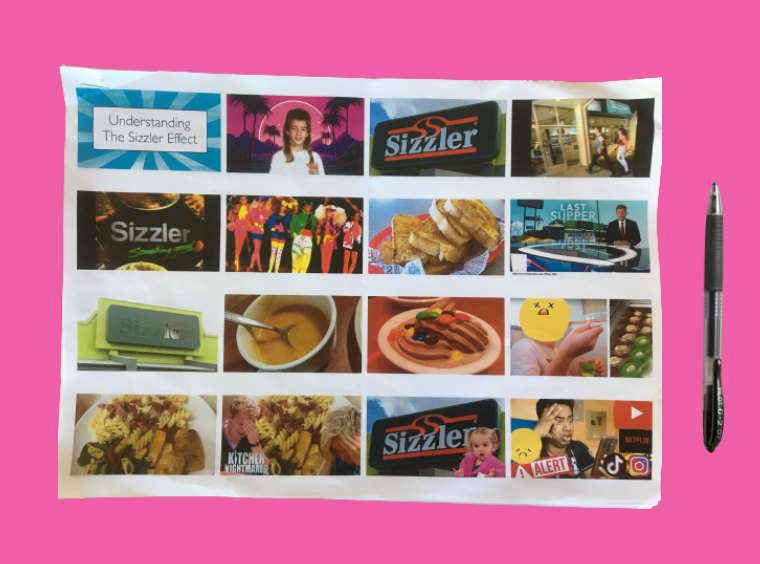
Sometimes I wrote out what I’d be saying in relation to each slide (without looking at my notes). Then I checked my original notes to make sure I hadn’t forgotten anything.
It’s really important that you don’t skip the stage of checking to see how you went, especially as you become more confident with the content.
At times, I found myself thinking “I know this stuff! I don’t need to check my notes” but then another part would say, “You better just check . . . just to be on the safe side”.
I’m glad I forced myself to check because more often than not I would discover that I had missed a crucial point.
Zines are cute little booklets you can create on any topic you like. They are fun to make, so I thought I’d try making a mini zine on the main points of some new content I had to learn.
I folded up an A4 page into a booklet and then I sketched out the main points on each panel.
I create a deck of flashcards on some key ideas (question on one side and the answer on the back) and then I test myself with them.
I read the question and before flipping the card, I write out the answer on a sheet of paper or say it out loud. Then I check to see how I went.
The beauty of flashcards is they are small and portable (they can easily fit in your pocket or bag). Whenever you have a spare minute or two, you can get a little active recall practice in.
It’s not enough to do active recall just once on the content you need to learn. For best results, you want to practice recalling the information several times over a period of time.
I didn’t follow a strict schedule for the 30 days. I had my notes for each important chunk of information I had to learn pinned to eight different clipboards.
Every morning, I’d pick up a different clipboard and I’d practice that specific content. I knew as long as I’d had a good night’s sleep in between practice sessions that the information was being strengthened in my brain.
Doing active recall is a bit like doing a high intensity workout: it can be exhausting. But you must remember, just like a high intensity exercise session is an effective way to train and get fit, active recall is an effective way to learn. Unlike less effective strategies (e.g., rereading and highlighting), you can learn a lot in a short space of time with active recall.
The key is to expect the process to be a little uncomfortable. Don’t fight the discomfort. If you trust the process and persevere, it won’t be long before you begin to see amazing results.
Just because active recall is challenging to do that doesn’t mean you can’t have fun with it.
Using a combination of different active recall strategies is one way to keep things fresh and interesting for your brain. But you may wish to try the following things to add a little boost of fun to your active recall sessions:
• Use a different type of pen
• Use a different coloured pen
• Change the type of paper or notebook you use (e.g., instead of using lined paper, use blank A3 paper)
• Incorporate movement into your active recall sessions (e.g., walk and test yourself with some flashcards)
• Change your study environment (e.g., go to the library or study outside)

Like I said, active recall is challenging to do, especially when you first start learning new content. You can feel awkward and clumsy. For this reason, it’s easy to make excuses to get out of doing it (e.g., “I’m too tired”, “I’m not ready to do it”, and “It’s not the right time”).
This is where you need to harness the power of habits.
Find a set time in your day to do a little active recall practice. For instance, during my 30 days of active recall, I scheduled my practice sessions for first thing in the morning. I knew after I washed my face, I would sit down to practice.
Incorporating active recall into my morning routine worked really well for me. I was getting the hardest thing done first thing in the day. And once it was done, I could relax. It was done and dusted!
At a certain point, I became more confident with the content and I found I was on a roll. I felt motivated to do active recall.
This is when I started to look for spare moments in the day to squeeze in a few extra mini practice sessions.
For example, one day I found myself waiting in a car. I grabbed a paper shopping bag and started scribbling out the content onto the bag. As soon as I got home, I checked the shopping bag against my notes.
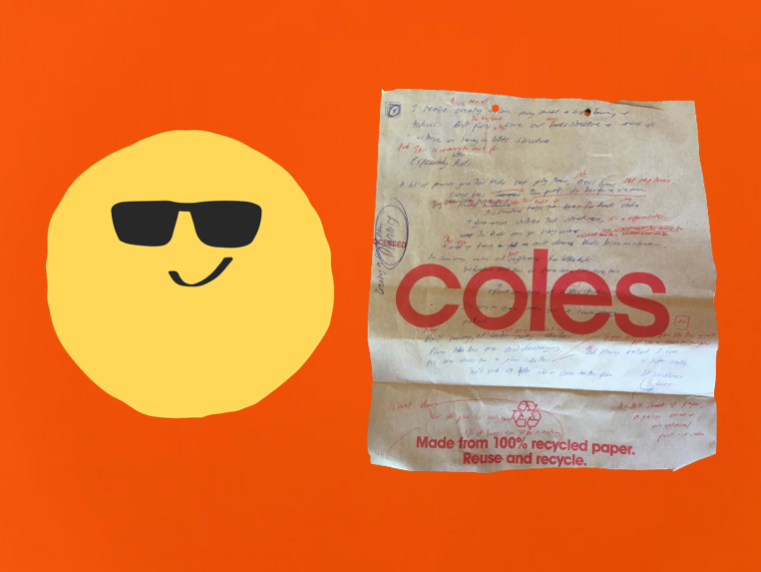
I hope you can see that there’s no one set way to do active recall. This is a highly effective strategy you can be creative with. As long as you’re testing yourself and checking to see how you went, you can’t go wrong.
And if you do make a mistake? It’s no big deal. If you check to see how you went, you won’t embed the error in your long-term memory.
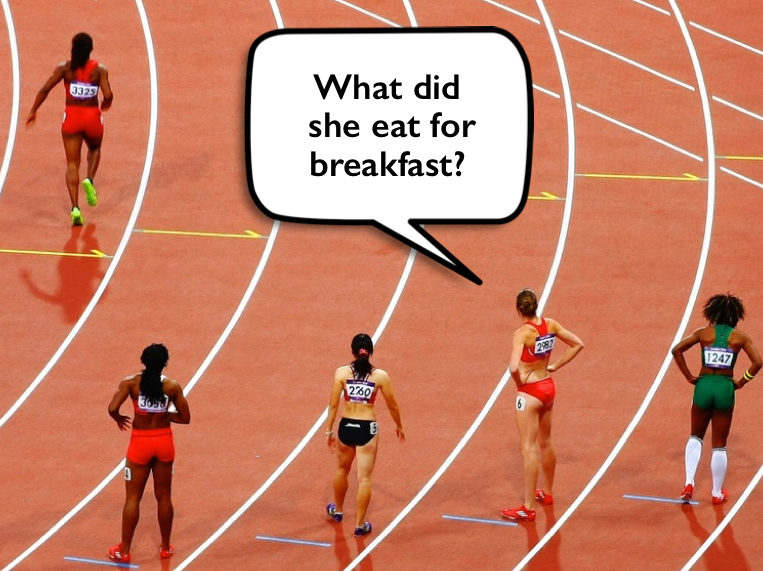
This means you need to prepare yourself mentally and physically for them.
You can work so hard to memorise large quantities of information for an exam, but if you’re not mentally and physically prepared, all that hard work can sadly go to waste.
When it comes time to take your exams, you have to relate to yourself as a professional athlete. Leading up to the day of the big performance (i.e. the exam), you need to eat nutritious food, be in the right frame of mind, manage your nerves, and allow your body to rest. These simple things can make all the difference to your exam performance.
You may be thinking “But isn’t this just common sense?”
It is! But creating healthy habits takes time and practice.
It’s one thing to intellectually know you should be eating well but it’s another thing altogether to incorporate healthy meals and snacks into your lifestyle.
I see a lot of students drinking energy drinks, getting very little sleep, and eating highly processed foods in the days leading up to exams. I have to admit, there was a time when I engaged in these behaviours too. I can tell you from personal experience, this is a recipe for mediocre grades and a miserable existence.
Here are my top 10 tips to prevent burnout and boost exam performance:
Sleep is critical to the learning process, exam performance, and wellbeing. Yet it’s usually the first thing students sacrifice to get more study done.
If you miss two hours of sleep each night for a week, the cognitive effects are as bad as going without sleep for two days straight!
Studies have also found that if you stay awake for 18 hours straight that’s like having a blood alcohol level of 0.05. In other words, it’s like being legally drunk. Your ability to focus, think, and learn will be seriously impaired.
You can’t adapt to getting less sleep. As adolescents, you need about 9-10 hours of sleep per night to be as alert as possible when you wake up.
If that feels unachievable, try to just get an extra 15 minutes of sleep tonight. Gradually increase this each night until you reach your target.
Often students stop exercising when they start preparing for exams. They think “I don’t have time to exercise!”. It’s as if they think they must spend every moment studying. Don’t fall into this trap.
Movement is your friend when it comes to studying for exams.
Research shows engaging in regular physical movement will help you to study more effectively. Firstly, it’s a great way to relieve stress and release feel good chemicals. Secondly, it gets the blood flowing more efficiently to your brain, which can give you a cognitive boost.
One study found students who engaged in 5 minute movement breaks every 17 minutes during a lecture retained more information and could focus better.
Every time you engage in a short movement break, you’re enhancing your study sessions.
Research has found that students who skip breakfast experience a decrease in cognitive performance and alertness compared to students who eat breakfast.
Eating a nutritious breakfast will give you a cognitive boost before an exam. It will also help you to feel fuller for longer, stabilise your mood, and give you plenty of energy to get through the exam.
Here are some healthy breakfast ideas:
Muesli or porridge with nuts and fresh fruit (e.g., berries) Wholemeal toast with a variety of toppings (e.g., baked beans, tomatoes, and avocado) and a piece of fruit A healthy homemade smoothie (click here for my brain boosting smoothie recipe)
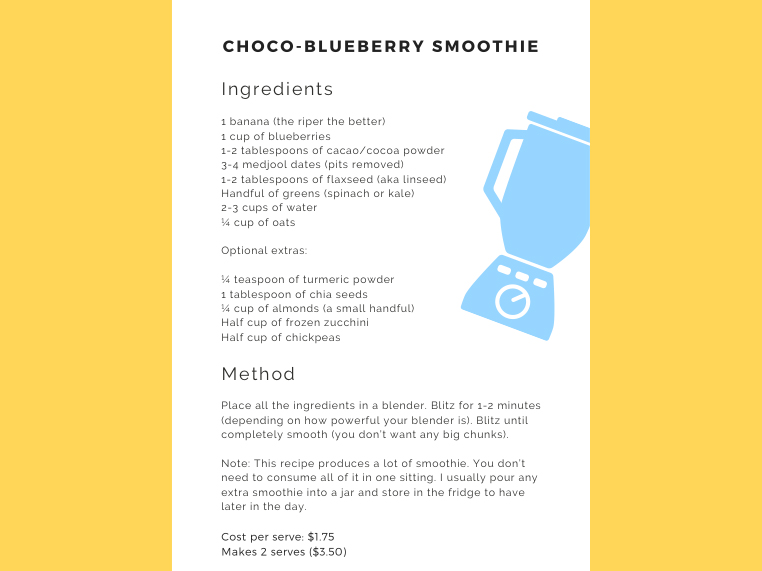
Your brain requires adequate hydration to function properly. Drinking water ensures that your brain receives the necessary fluids to perform tasks efficiently, such as retaining information and problem-solving.
Take regular sips of water as you study. It’s a good idea to have a glass of water or a reusable drink bottle within arms reach.
You may even want to create a tiny habit to remind yourself to engage in this simple behaviour (e.g., “After I finish answering a practice exam question, I will take a sip of water”).
Many years ago, I started thinking that my teachers and lecturers were out to get me. I thought they would mark me down wherever they got the chance. As a result of this distorted thinking, I became too scared to write anything in one of my first tests at law school. After receiving a terrible grade (5%), my brother said to me:
“Remember sis, your teachers want you to do well. They will try to give you marks wherever they can. It’s in their best interest to do so.”
Don’t worry about writing a perfect answer. If you’re unsure, be brave and still write something down. Even if it’s just a few dot points, it’s better than nothing. You may not get any marks for it, but your teachers won’t take marks off.
Just remember, most of the time your teachers are on your side and they want you to succeed. When you do well, it makes them look good.
Chances are there will always be something that you could have studied more thoroughly come the day of your exam. But on the morning of an exam, you can’t do much about that, so there’s no point worrying. Worrying will just deplete your finite energy, which you need to conserve for the exam.
Instead of worrying, try saying this to yourself before each exam:
“I now know so much more than I did before. I’ll be able to answer many questions in this exam.”
Telling yourself this positive micro-thought will allow you to enter the exam in a calm and confident frame of mind.
It’s normal to feel a bit nervous before an exam. But there are certain things and people that can push your anxiety levels into dangerous territory and impair your exam performance.
For example, coffee and energy drinks will skyrocket your stress levels. Similarly, hanging out with people who have a lot of nervous energy and are venting about the exam (“I’m going to fail!” and “I hardly studied!”) are going to leave you feeling distracted and a little jangled.
Before the exam, do your best to isolate yourself from these people. If you’re worried about offending someone who is venting to you, you could say “I’m sorry but I really need to do some last minute cramming”. Then proceed to pull out your notes and pretend to read them.
How many times have you stayed back after an exam to talk to your friends about what you put for each question? Have you ever felt terrible after doing this?
It can be reassuring to know that you wrote the same answer as your friends. But if you find out that you wrote something completely different, you may start to second guess yourself. If you have another four or five exams to go, this may throw you off your game.
This is why I don’t recommend engaging in a postmortem of the exam until you get your results/exam paper back.
When you walk out of the exam room, tell yourself:
“That exam is over. There’s nothing I can do to change how I went. It’s time to move on!”.
You could imagine yourself locking the exam in a box and throwing it off a cliff or rolling it up and stuffing it in a bottle and throwing it out to sea. The point is you need to mentally disconnect from that exam and focus on studying for the next one.

If you come across a question that you’re not sure how to answer, stop for a moment and take a few deep breaths (in for the count of 4 and out for the count of 4).
A simple breath activity you can try is the Box Breathing Technique. This involves imagining yourself breathing along the sides of a box (breathing in for the count of four on one side, out for the count of four on the next side, etc). Repeat this 2-3 times. Then take a look at the question again.
If you are still unsure how to answer the question, move on to another question.
The worst thing you can do is panic (remember, stress impairs your ability to think and recall information).
By engaging in Box Breathing, you can help yourself to remain in a calm and stable state.
Many of us are familiar with writer’s cramp. This can be caused by gripping onto your pen too tightly. Try loosening your grip a little.
Alternatively, experiment with a range of different pens. Some biros require you to press down hard on the page to make a mark, but not gel pens. The ink just flows onto the page!
The reality is, even with a good gel pen, your elbow will start to hurt at some point if you’re taking a 3 hour exam. When it does start to hurt, have a rest for a few seconds (yes, you have time to do this). Stretch your arm out. Shake it a little.
Treat each exam like a mountain hike rather than a 100 metre sprint. Resting for a few moments here and there will be time well spent and will enhance your overall performance.
These simple strategies can help to elevate your exam performance. My advice is to start small. Even if your exams are several weeks away, select one or two of these ideas and start testing them out today. At first, the strategies will require a bit of mental effort. But like anything in life, if you persevere they’ll become second nature to you and they’ll just be things you do without even thinking.
Want to learn more exam strategies? Click here to download a free copy of 70 ways to ace your exams.
Dr Jane Genovese delivers interactive and engaging study skills sessions for Australian secondary schools. She has worked with thousands of secondary students, parents, teachers and lifelong learners over the past 15 years.
Get FREE study and life strategies by signing up to Dr Jane’s newsletter:
© 2025 Learning Fundamentals